What is Dental Deep Cleaning and Do I Need It?
October 11th, 2018
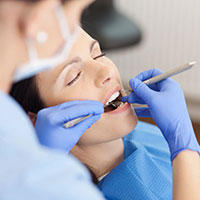 Dentists will often recommend a deep dental cleaning for people who don’t brush and floss regularly or for those who have missed several dental check-up appointments.
Dentists will often recommend a deep dental cleaning for people who don’t brush and floss regularly or for those who have missed several dental check-up appointments.
While it may sound like another way for the dentist to make money, the reality is that deep dental cleaning is an established procedure that is critical to the health and well-being of both you and your teeth.
Even with regular flossing and brushing, plaque and tartar can slowly build up on the teeth causing the beginning stages of gum disease. This is why dentists recommend that you go in for a checkup at least once a year (twice, preferably).
We’re going to look at what deep cleanings are, why they’re recommended, and how they’re performed.
Why Are Deep Cleanings Recommended?
The technical term for a deep cleaning is “root scaling and planing.” It’s an established dental treatment that’s been around for well over 70 years. When you sit down in the dental chair, and the dentist starts to examine your mouth, he will use a small metal probe to measure the areas around your teeth.
He’s specifically looking to measure the depth of the gum tissue between the teeth and gums. If the depth goes beyond five millimeters, it’s referred to as a “pocket,” and this is the area where bacteria will form and live. Healthy pockets measure no more than three millimeters deep. Anything deeper and you have the beginning stages of gum disease.
Deep pockets are caused by an overabundance of bacteria and can form if the teeth aren’t regularly cleaned. While brushing and flossing on a daily basis can help remove the majority of food debris in your mouth, sometimes minute particles will be left behind. Only a dental checkup can eliminate the areas of plaque and tartar that can build up over the course of a few months.
What Does a Dental Deep Clean Entail?
A dental deep clean usually requires a separate appointment as it can take upwards of 45 minutes per quadrant in your mouth. There are four quadrants that need to be cleaned: lower left, lower right, upper left, and upper right. Depending on the extent of the cleaning that needs to be done, it may require multiple appointments to treat all four quadrants.
The dentist will use a set of small surgical grade metal probes and scrapers to physically remove the tartar and plaque from your teeth and gums. He will carefully poke and prod and scrape until he’s confident the tartar and plaque have been removed from the area.
If the process sounds a bit uncomfortable, well, it kind of is. This is why dentists will use a local anesthetic to numb the areas where he will be cleaning.
If the patient suffers from anxiety issues or would like something to make the procedure a bit more bearable, the dentist can prescribe specific medication to help alleviate the unpleasantness of the cleaning process.
What Happens if You Don’t Keep Dental Appointments?
Root scaling and planing is a necessary process. It’s the last line of defense people have before their early stages of gum disease turn into a much more serious condition called periodontitis. If this condition occurs, their immune system will start to attack bone and tissue in the mouth because the inflammation of the gums is so severe.
If the periodontitis worsens, it can result in massive toothaches and teeth needing to be pulled. While a dental deep cleaning can temporarily halt that process, the plaque and tartar will return if the person doesn’t take a more proactive role in their dental hygiene.
Periodontitis causes irreversible bone loss which can give bacteria even more places to hide and grow. Regular brushing and flossing will completely miss these areas. This is why some people will require multiple deep cleanings over the course of several months. In some situations, the dentist may require more than one deep cleaning per year until the situation has stabilized.
How Much Do Deep Cleanings Cost?
The only downside to deep cleanings is that they require heavy manual labor on the part of the dentist. There are no shortcuts, nor automated machines that can speed up the cleaning process. Scraping plaque and tartar off teeth is not easy, and this is why it can take upwards of 45 minutes for each of the four quadrants of your mouth.
It’s impossible to say what the deep cleaning will cost until the dentist has evaluated the patient's mouth and determined a plan of action. The good news is that most dental insurance plans will cover a portion of the deep cleaning. Once the dentist has given you a treatment plan, you can take that information back to your insurance company, and they will tell you exactly what they will cover.
Dental Deep Cleanings in Chicago
If you haven’t had a checkup in over a year, or you have been lax on keeping up with brushing and flossing, you owe it to your health to make an appointment for a dental deep cleaning.
Give us a call today at (312) 787-2131 to schedule an appointment for your dental deep cleaning. At Water Tower Dental Care, our gentle and caring dentists will help clean your teeth and make your smile look like a million bucks!

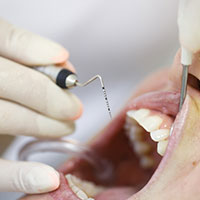 Can you remember your last
Can you remember your last 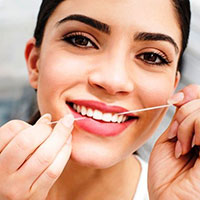 Do you floss on a daily basis? If your answer is an emphatic “no,” you’re not alone.
Do you floss on a daily basis? If your answer is an emphatic “no,” you’re not alone. Summer is just around the corner! Are you ready to take in all that summer in Chicago has to offer? With all the hustle and bustle of the city, it can be pretty easy to lose your routines, like your oral health. By being conscious about your oral health, you will be more inclined to continue your good habits even though the weather, and the city, are beckoning as the whether begins to warm up. Here are five tips to help you keep your teeth healthy this summer in Chicago!
Summer is just around the corner! Are you ready to take in all that summer in Chicago has to offer? With all the hustle and bustle of the city, it can be pretty easy to lose your routines, like your oral health. By being conscious about your oral health, you will be more inclined to continue your good habits even though the weather, and the city, are beckoning as the whether begins to warm up. Here are five tips to help you keep your teeth healthy this summer in Chicago! Flossing is one of the more overlooked (and frequently skipped) steps to good dental hygiene. Dentists agree it’s an essential part of dental care. But if it seems like your floss is getting stuck between your teeth more often than your food does, it’s tempting just to brush your teeth and skip flossing. Don’t do it!
Flossing is one of the more overlooked (and frequently skipped) steps to good dental hygiene. Dentists agree it’s an essential part of dental care. But if it seems like your floss is getting stuck between your teeth more often than your food does, it’s tempting just to brush your teeth and skip flossing. Don’t do it! Everyone wants to maintain a healthy mouth with minty fresh breath. But if you use too much mouthwash, you might not get the intended results. Studies have shown that when it comes to mouthwash, there can be too much of a good thing.
Everyone wants to maintain a healthy mouth with minty fresh breath. But if you use too much mouthwash, you might not get the intended results. Studies have shown that when it comes to mouthwash, there can be too much of a good thing. Many people think they should brush their teeth right after they eat. At first glance, this seems to make sense. If you brush your teeth after a meal, you should keep your teeth healthy by getting rid of the food in your mouth, right?
Many people think they should brush their teeth right after they eat. At first glance, this seems to make sense. If you brush your teeth after a meal, you should keep your teeth healthy by getting rid of the food in your mouth, right? From extreme temperatures to hungry bacteria, enamel protects your teeth from all of the bad stuff out there. This hard mineralized surface on your teeth keeps them looking and feeling great. But unfortunately, over time, your enamel can chip, break off and erode. Unlike most other parts of your body, enamel doesn’t grow back naturally because it doesn’t have any living cells. Once it’s gone, it’s gone forever.
From extreme temperatures to hungry bacteria, enamel protects your teeth from all of the bad stuff out there. This hard mineralized surface on your teeth keeps them looking and feeling great. But unfortunately, over time, your enamel can chip, break off and erode. Unlike most other parts of your body, enamel doesn’t grow back naturally because it doesn’t have any living cells. Once it’s gone, it’s gone forever. We love to see our patients taking care of their teeth with proper brushing habits. While most people brush twice a day, we do get some asking if they can brush their teeth too much and damage their teeth that way. Many people are surprised to hear our answer: yes, you can actually brush too much. But before you start cutting down your time with your toothbrush, keep reading to find out exactly what brushing too much means.
We love to see our patients taking care of their teeth with proper brushing habits. While most people brush twice a day, we do get some asking if they can brush their teeth too much and damage their teeth that way. Many people are surprised to hear our answer: yes, you can actually brush too much. But before you start cutting down your time with your toothbrush, keep reading to find out exactly what brushing too much means. Next to brushing, flossing your teeth is the most important daily practice for great oral health. It helps scrape the plaque off the sides of your teeth and remove harmful bacteria from your gums. However, many of us make common mistakes that keep us from doing the best floss job possible. Thankfully, all of these mistakes are easily fixable, and after a short read, you can better your technique and ensure healthy gums and shining teeth.
Next to brushing, flossing your teeth is the most important daily practice for great oral health. It helps scrape the plaque off the sides of your teeth and remove harmful bacteria from your gums. However, many of us make common mistakes that keep us from doing the best floss job possible. Thankfully, all of these mistakes are easily fixable, and after a short read, you can better your technique and ensure healthy gums and shining teeth. Sometimes we find home remedies and new tricks to cleaning your teeth incredibly interesting, and potentially helpful. Oil pulling has been around for thousands of years, yet has only sparked the attention of many of our patients just recently. So what exactly is oil pulling and can it help keep your teeth is top health?
Sometimes we find home remedies and new tricks to cleaning your teeth incredibly interesting, and potentially helpful. Oil pulling has been around for thousands of years, yet has only sparked the attention of many of our patients just recently. So what exactly is oil pulling and can it help keep your teeth is top health?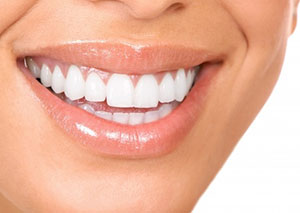 Even as a dental team, we can understand that it’s hard to maintain a solid routine of teeth brushing throughout the day. Many people aren’t home when they eat lunch, thus it makes it hard to brush your teeth after. If you stay at your partner’s place, or a relative’s, and you realize you forgot your toothbrush, what do you do? While brushing your teeth is the first line of defense against plaque build up and cavities, sometimes you need to look for alternative ways to clean your teeth.
Even as a dental team, we can understand that it’s hard to maintain a solid routine of teeth brushing throughout the day. Many people aren’t home when they eat lunch, thus it makes it hard to brush your teeth after. If you stay at your partner’s place, or a relative’s, and you realize you forgot your toothbrush, what do you do? While brushing your teeth is the first line of defense against plaque build up and cavities, sometimes you need to look for alternative ways to clean your teeth.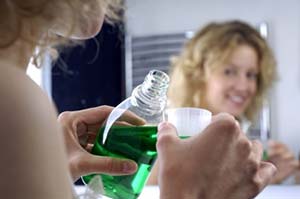 Mouthwash is an essential key to proper oral hygiene. However, many Americans misuse the product, either by using too much, too little, or often not using it for the right amount of time. To ensure that you’re using the proper mouthwash practices, we would like to offer you this simple guide to using mouthwash.
Mouthwash is an essential key to proper oral hygiene. However, many Americans misuse the product, either by using too much, too little, or often not using it for the right amount of time. To ensure that you’re using the proper mouthwash practices, we would like to offer you this simple guide to using mouthwash.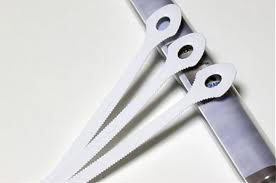 When it comes to oral hygiene, Water Tower Dental encourages daily brushing and flossing along with biannual dental cleanings and check ups. Clearing harmful bacteria out of the mouth will help keep your teeth and gums clean and healthy, but what about your breath? Although brushing a flossing can help keep the bacteria that cause bad breath away from your teeth and gums, there's still a chance you'll have bad breath. That's because many of the bacteria can camp out on your tongue. Cue the tongue scraper, a leading tool in keeping harmful bacteria off your tongue.
When it comes to oral hygiene, Water Tower Dental encourages daily brushing and flossing along with biannual dental cleanings and check ups. Clearing harmful bacteria out of the mouth will help keep your teeth and gums clean and healthy, but what about your breath? Although brushing a flossing can help keep the bacteria that cause bad breath away from your teeth and gums, there's still a chance you'll have bad breath. That's because many of the bacteria can camp out on your tongue. Cue the tongue scraper, a leading tool in keeping harmful bacteria off your tongue.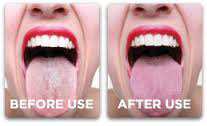 There are several different designs of a tongue scraper (also referred to as a tongue brush or tongue cleaner), but their objective is still the same. Tongue cleaners- unlike toothbrushes- are designed for the purpose of lifting and trapping the plaque coating and removing it from the tongue.
There are several different designs of a tongue scraper (also referred to as a tongue brush or tongue cleaner), but their objective is still the same. Tongue cleaners- unlike toothbrushes- are designed for the purpose of lifting and trapping the plaque coating and removing it from the tongue.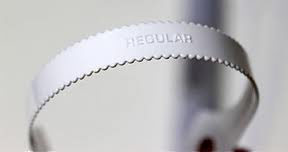 A tongue scraper will not just help your bad breath though. A tongue scraper helps remove ama from the tongue. Ama is sanskrit meaning anything that is undigested. Specifically for your mouth, undigested food. Old remnants of food, just like plaque, can build up along the tongue. The more build up you have, however, the less your taste buds can detect flavors of food. By using a tongue scraper, you can actually help your tongue taste food better. That's a great plus for anyone who loves a good meal.
A tongue scraper will not just help your bad breath though. A tongue scraper helps remove ama from the tongue. Ama is sanskrit meaning anything that is undigested. Specifically for your mouth, undigested food. Old remnants of food, just like plaque, can build up along the tongue. The more build up you have, however, the less your taste buds can detect flavors of food. By using a tongue scraper, you can actually help your tongue taste food better. That's a great plus for anyone who loves a good meal.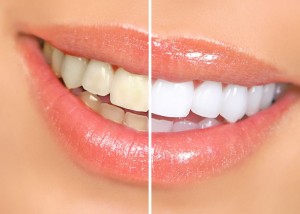
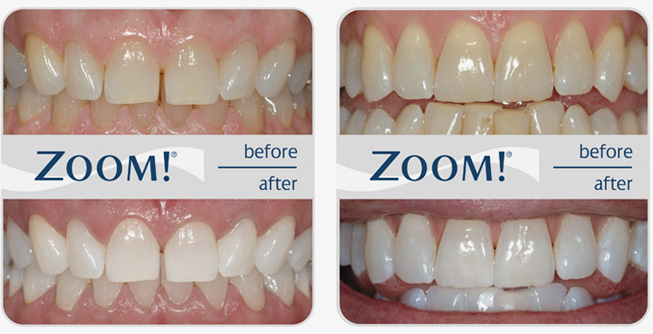
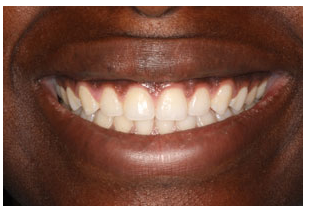 When people think of dental hygiene, they often only focus on the teeth. That's what most people see, right? Bright, white, straight teeth are the goal. However, most people neglect to consider how important it is to take care of your gums properly. While sore, sensitive gums can occur from lack of brushing and proper care, the gum's biggest threat is Periodontal Disease, or Gum Disease. According to the National Institute of Dental and Craniofacial Research, over
When people think of dental hygiene, they often only focus on the teeth. That's what most people see, right? Bright, white, straight teeth are the goal. However, most people neglect to consider how important it is to take care of your gums properly. While sore, sensitive gums can occur from lack of brushing and proper care, the gum's biggest threat is Periodontal Disease, or Gum Disease. According to the National Institute of Dental and Craniofacial Research, over 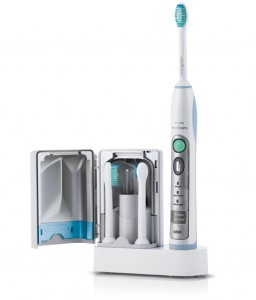 It may seem elementary to you, but believe it or not, many people still don't brush their teeth correctly. Either they don't do it for long enough time, concentrate on the wrong areas, brush too hard, or just completely misuse the toothbrush. For our Water Tower Dental Care patients, and anyone else that has discovered our blog, we would like to provide you with the steps to properly brushing your teeth.
It may seem elementary to you, but believe it or not, many people still don't brush their teeth correctly. Either they don't do it for long enough time, concentrate on the wrong areas, brush too hard, or just completely misuse the toothbrush. For our Water Tower Dental Care patients, and anyone else that has discovered our blog, we would like to provide you with the steps to properly brushing your teeth. Wet the toothbrush and apply a thin strip of toothpaste. Although there is a plethora of toothbrushes to choose from, we don't recommend a specific design of brush, rather it's more important to find a brush that if manual is soft and if electric, ultrasonic. Richard H. Price, DMD and consumer advisor for the
Wet the toothbrush and apply a thin strip of toothpaste. Although there is a plethora of toothbrushes to choose from, we don't recommend a specific design of brush, rather it's more important to find a brush that if manual is soft and if electric, ultrasonic. Richard H. Price, DMD and consumer advisor for the  When using a manual soft toothbrush, start by brushing the outer surface of your upper teeth, then your lower. Keep the bristles at a 45-degree angle from your teeth and sweep or roll away from the gum line. Your gums are very sensitive and must be treated with care when brushing. Never brush up, into the gums, always away. When using an electric ultrasonic toothbrush, hold bristles at a 45-degree angle at gum line and slowly move brush across teeth.
When using a manual soft toothbrush, start by brushing the outer surface of your upper teeth, then your lower. Keep the bristles at a 45-degree angle from your teeth and sweep or roll away from the gum line. Your gums are very sensitive and must be treated with care when brushing. Never brush up, into the gums, always away. When using an electric ultrasonic toothbrush, hold bristles at a 45-degree angle at gum line and slowly move brush across teeth. After the outer surface, focus on the inner surface of the teeth, first the upper then lower teeth. Again, brush away from the gums at a 45-degree angle.
After the outer surface, focus on the inner surface of the teeth, first the upper then lower teeth. Again, brush away from the gums at a 45-degree angle. Clean the chewing surfaces of the teeth. You can be slightly more aggressive with the surface of the teeth, but nothing too hard. Pay extra attention to the hard-to-reach back teeth and areas around fillings or crowns.
Clean the chewing surfaces of the teeth. You can be slightly more aggressive with the surface of the teeth, but nothing too hard. Pay extra attention to the hard-to-reach back teeth and areas around fillings or crowns. Once you've finished on the teeth, give your tongue a gentle brush to remove any bacteria and to keep your breath fresh longer. We highly recommend using a tongue scraper as well.
Once you've finished on the teeth, give your tongue a gentle brush to remove any bacteria and to keep your breath fresh longer. We highly recommend using a tongue scraper as well.




 Website Powered by Sesame 24-7™
Website Powered by Sesame 24-7™